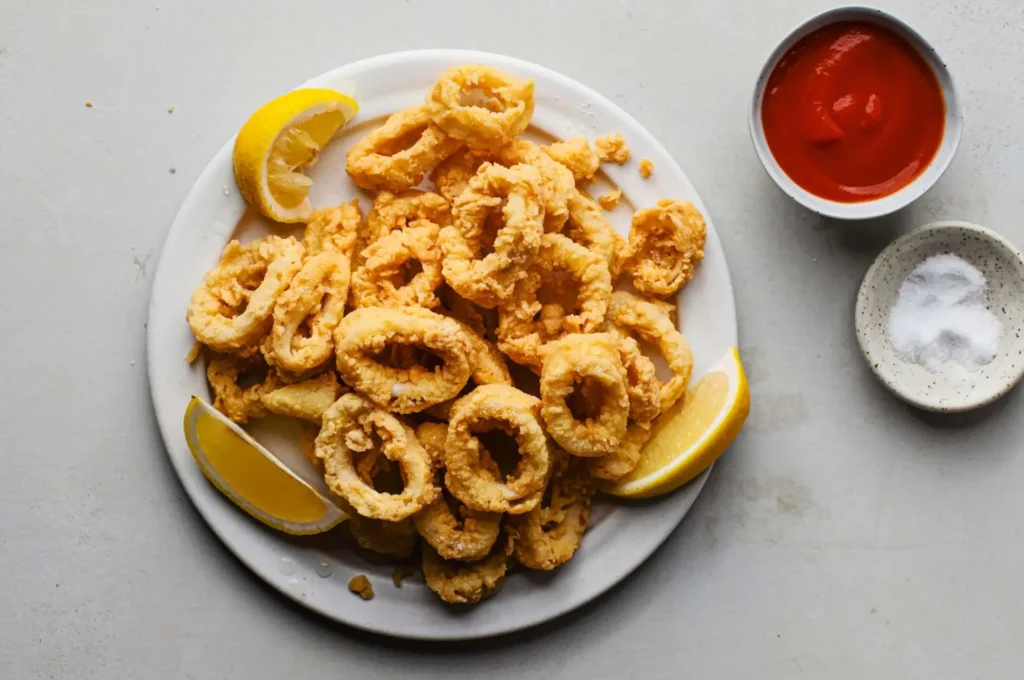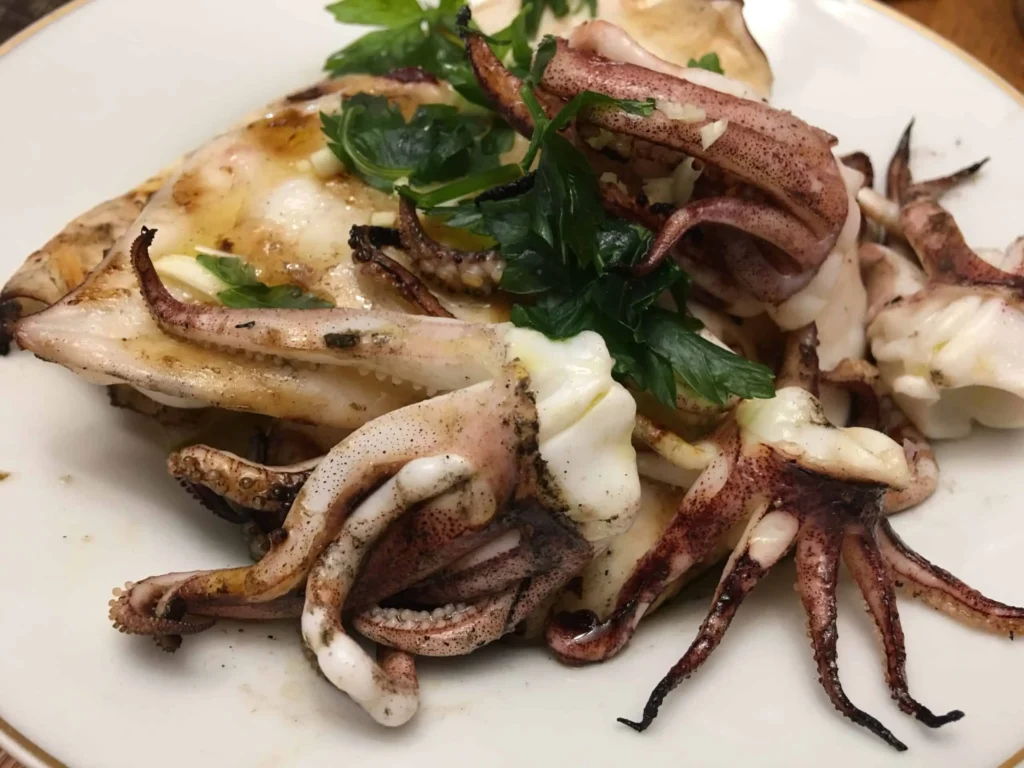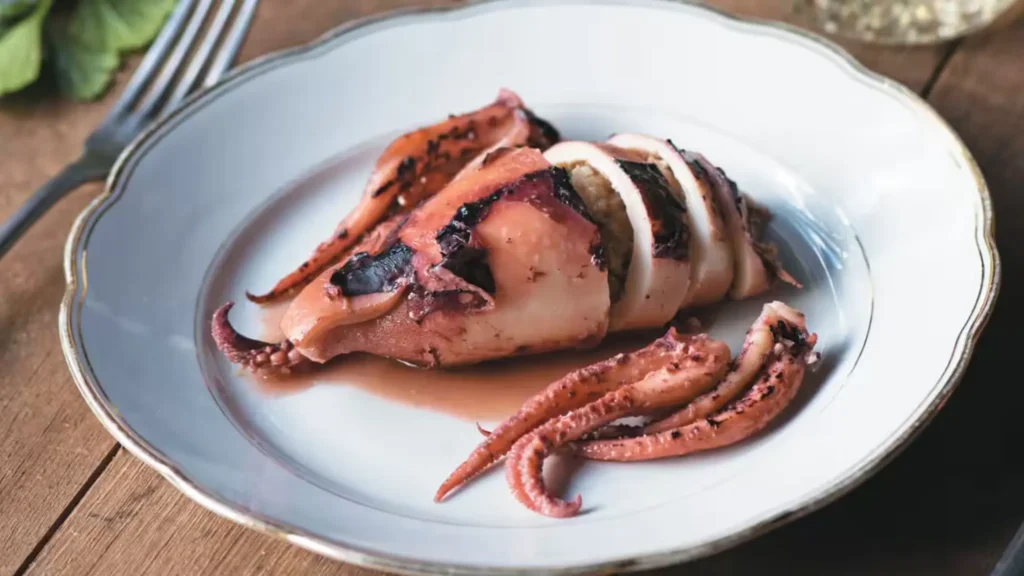What is Calamari? often celebrated as a delectable seafood dish, is cherished in various culinary traditions around the world. This article explores the origins, preparation methods, nutritional value, cultural significance, and the pros and cons of indulging in this popular delicacy.
1. The Origins of Calamari
1.1 Etymology
The term “calamari” is derived from the Italian word for squid, “calamaro.” While commonly associated with the dish itself, it specifically refers to the cephalopod that serves as the main ingredient in numerous culinary creations.
1.2 Historical Context
Squid has been consumed by humans for thousands of years. Ancient Greeks and Romans enjoyed various seafood, including squid, which was typically prepared simply to highlight its fresh flavors. Over the centuries, calamari has been embraced in many cultures and is now enjoyed worldwide.
1.3 Cultural Significance
In Mediterranean countries, calamari represents not only a meal but also local fishing traditions and culinary heritage. It plays a significant role in Italian, Spanish, and Greek cuisines, often served as appetizers or main courses.

If you want some information about What is Blue Chew then check out our previous blog post.
2. The Anatomy of Calamari
2.1 The Squid
It refers to the culinary use of squid, a member of the class Cephalopoda. Characterized by their elongated bodies, large eyes, and eight arms, squids are known for their soft, tender flesh, making them a popular seafood choice.
2.2 Varieties of Squid
Numerous species of squid are suitable for culinary use, with the European squid (Loligo vulgaris) and the Pacific pink squid (Illex argentinus) being the most commonly prepared for calamari dishes. Each type contributes its unique flavor and texture.
3. Preparing Calamari
3.1 Cleaning and Preparing Squid
Cleaning squid involves removing the internal organs, ink sac, and skin. This process can be performed at home or, more conveniently, pre-cleaned squid can be purchased from seafood markets.
3.2 Cooking Methods
Calamari can be prepared in various ways, resulting in distinct flavors and textures. The most popular methods include:
- Frying: This widely regarded method involves battering or flouring squid rings and deep-frying them until golden brown, yielding a crispy exterior.
- Grilling: Marinated squid is grilled over high heat, imparting a smoky flavor while maintaining tenderness.
- Sautéing: Quick cooking in a pan with garlic, olive oil, and herbs results in flavorful, tender bites.
- Baking: Stuffed calamari can also be baked, often filled with a mixture of breadcrumbs, herbs, and cheese for added richness.
3.3 Common Seasonings and Marinades
Calamari pairs well with various seasonings, such as garlic, lemon, parsley, and chili flakes. Marinades, typically composed of acidic ingredients like vinegar or citrus juice, enhance the squid’s natural flavors.
4. Nutritional Value of Calamari
4.1 Health Benefits
Calamari is associated with several health benefits, making it a nutritious seafood choice:
- Protein Source: Rich in protein, calamari supports muscle repair and growth.
- Low in Calories: When prepared without heavy breading, calamari remains relatively low in calories, making it suitable for lighter diets.
- Rich in Nutrients: It contains essential nutrients, including vitamin B12, selenium, and omega-3 fatty acids, which contribute to heart health and cognitive function.
4.2 Considerations
Despite its benefits, preparation methods can impact calamari’s nutritional profile. Fried calamari, for instance, may be high in calories and unhealthy fats. Thus, opting for grilled or sautéed versions is often recommended to maintain health benefits.
If you want some information about What is Blue Chew then check out our previous blog post.

5. Pros and Cons of Calamari
5.1 Pros
- Flavorful Experience: Calamari offers a unique taste and texture that many find irresistible, particularly when prepared well.
- Versatility: The various cooking methods and seasonings make calamari adaptable to numerous cuisines, from Mediterranean to Asian.
- Nutritional Value: As a source of lean protein and important nutrients, calamari can be a healthful addition to a balanced diet when prepared mindfully.
5.2 Cons
- Potential Allergens: For those with shellfish allergies, calamari can cause serious allergic reactions. Awareness of such allergies is essential before consuming this dish.
- Sustainability Concerns: Overfishing and environmental impacts related to squid fishing can raise concerns about the sustainability of calamari. Consequently, sustainably sourced squid should be chosen when possible.
- Preparation Time: Cleaning and preparing fresh squid can be time-consuming; however, pre-cleaned options are readily available for convenience.
If you want some information about What is Blue Chew then check out our previous blog post.
6. Popular Calamari Dishes Around the World
6.1 Italian Calamari Fritti
One of the most famous preparations, calamari fritti, is characterized by deep-fried squid rings served with marinara sauce or lemon wedges. This dish epitomizes Italian culinary traditions and is frequently found in pizzerias and seafood restaurants.
6.2 Spanish Calamares a la Romana
In Spain, calamares a la romana is a popular dish in which squid is coated in a light batter and fried, typically served as tapas. This dish is commonly accompanied by aioli or a spicy sauce for dipping, making it a favorite among locals and tourists alike.
6.3 Greek Kalamarakia Tiganita
In Greece, kalamarakia tiganita refers to lightly battered and fried calamari, often served with a side of tzatziki or a squeeze of lemon. This dish is widely regarded as a beloved part of Greek dining culture.
6.4 Japanese Ikayaki
In Japan, calamari is often enjoyed as ikayaki, where whole squid is grilled and brushed with a savory sauce made from soy sauce and mirin. This preparation is a popular street food item that showcases the squid’s natural flavors.
7. Pairing Calamari with Beverages
7.1 Wine Pairings
Calamari’s delicate flavors are well complemented by various wines. White wines like Sauvignon Blanc or Pinot Grigio are often recommended due to their acidity and crispness. Furthermore, sparkling wines, such as Prosecco, can enhance the dish, particularly when calamari is fried.
7.2 Beer and Cocktails
Craft beers, especially those with citrusy or hoppy notes, can be a good match for fried calamari. Cocktails, particularly those that are citrus-based—such as mojitos or gin and tonics—provide a refreshing contrast to the dish.

8. Conclusion
In summary, calamari is more than just a delightful seafood dish; it embodies a rich culinary tradition that spans cultures and continents. With versatile preparation methods, nutritional benefits, and a unique flavor profile, it continues to captivate food lovers around the world. Whether enjoyed as a crispy appetizer or as part of a sophisticated entrée, this dish remains a testament to the joys of seafood dining. As diverse ways to prepare and enjoy calamari are explored, it is important to consider its pros and cons and savor every bite of this cherished delicacy on your culinary journey!
If you want some information about What is Blue Chew then check out our previous blog post.


